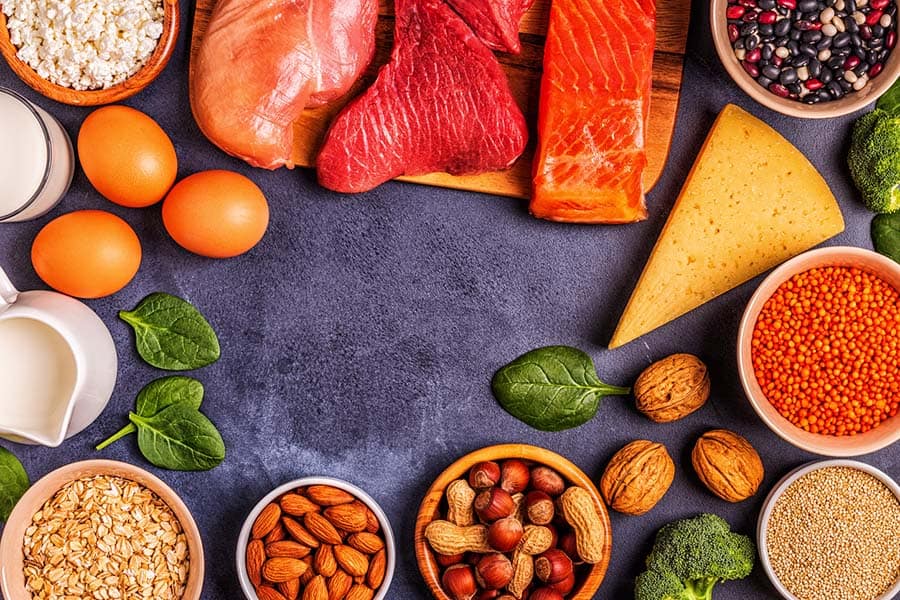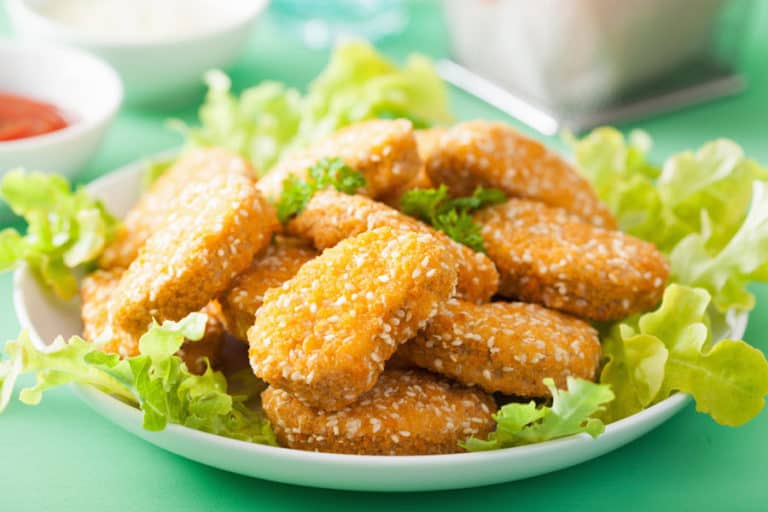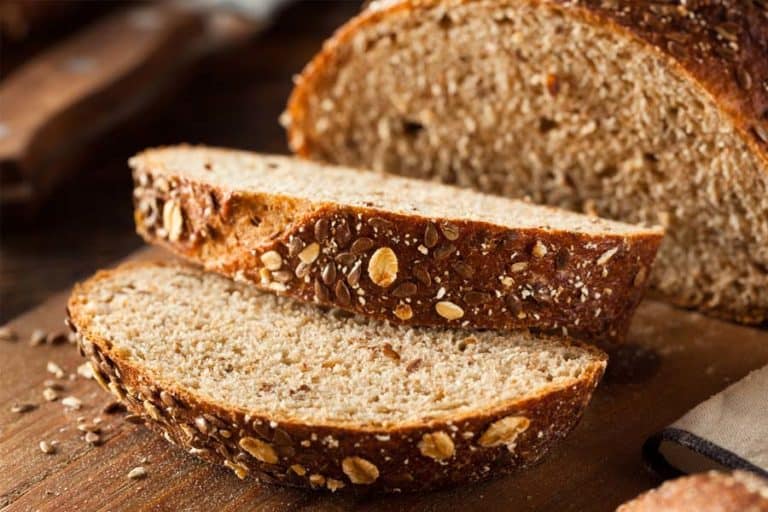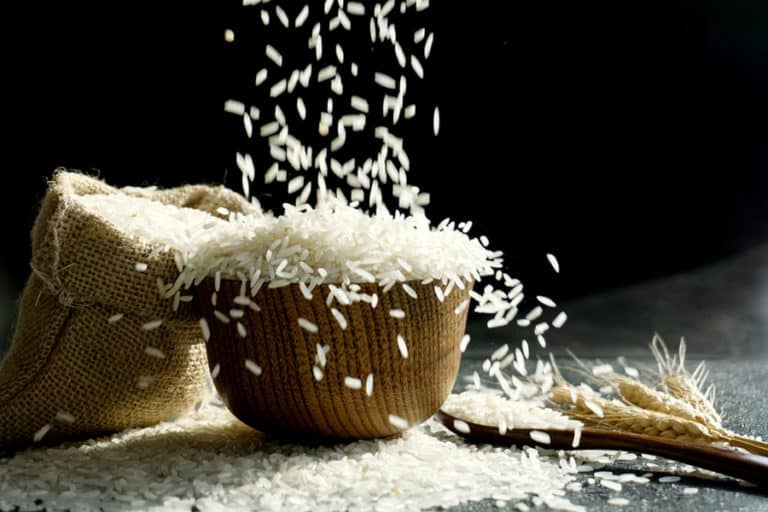Dukan Diet Review: Diet Phases, Food List, and More

The Dukan diet is based on the principle of consuming lots of protein-rich foods. It’s a low-carbohydrate, high-protein weight loss program that was created in the 1970s by former French physician, Dr. Pierre Dukan. There are both proponents and critics of this restrictive high protein diet.
This diet has been popular in Europe for years and is now gaining traction in the United States. The former French physician Dr. Pierre Dukan in the 1970s conceptualized this diet.
Read on to know more as we discuss the basics of the Dukan diet, including food list, diet rules, and the pros and cons of this high protein diet.
What is the Dukan diet?
The Dukan diet is a high-protein, low-carb diet that promotes rapid and sustainable weight loss without keeping dieters hungry.
Yes. A diet that doesn’t keep you hungry. Does that sound like an oxymoron? It’s not. The Dukan diet is based on the principle of consuming lots of protein-rich foods. This means that you can eat large quantities of delicious and nutritious foods while trying to lose weight. Consequently, Dukan-dieters remain full and satisfied for much longer despite being on a restricted diet.
How does the Dukan diet work?
The central idea of this diet is that by eating mostly protein-rich foods, you can stay full for longer and lose weight without feeling hungry. The diet consists of four phases, with the first two phases being very high in protein and the second two phases gradually adding carbs back into the diet. The final phase is meant to be a maintenance phase where dieters can eat whatever they want as long as they include one high-protein day per week.
Unlike other high protein diets, the Dukan diet emphasizes the consumption of animal protein, specifically lean cuts of meat and poultry. Animal protein is the only source of protein allowed during the first phase(vegetarians can consume tofu and soy protein). Selected plant proteins, fruits, and carbohydrate options are allowed in the later phases. Let’s take a closer look at the primary rules of the Dukan diet in the following section.
Dukan diet rules
The Dukan diet is a phase-wise weight loss plan, meaning that there are different consumption rules for different diet stages. Plenty of lean protein foods, water, and a 20-minute walk are the staples of the Dukan diet.
The diet is divided into four phases: the Attack phase, the Cruise phase, the Consolidation phase, and the Stabilization phase. There are 100 “allowed” foods in total, 68 of which are animal-based proteins and 32 are plant-based proteins. In addition, the diet requires you to drink at least 64 ounces of water per day and take a 20-30 minute walk in every phase.
Each phase has a different set of rules, which we will get to in a moment. However, the four phases are often clubbed into two broad groups: the weight loss phase (Attack and Cruise) and the weight maintenance or stabilization phase (Consolidation and Stabilization).
Dukan diet phases
This diet is divided into four distinct phases. The phases aren’t defined by the number of days you spend on them but by your goal weight. You stay in each phase until you reach your desired weight and then move on to the next phase.
Since the initial pace of weight loss is usually rapid, the first two phases tend to last anywhere from two to six weeks. The following two phases are much longer. In fact, the last phase of this diet is meant to be a lifelong weight maintenance plan.
Here is a phase-wise breakup of Dr. Pierre Dukan’s diet:
Attack phase
The first phase of the diet is meant to jumpstart weight loss. You can eat unlimited amounts of the 68 natural lean protein foods on the food list during this phase. This phase lasts for two to ten days, depending on when you reach your first weight milestone.
Cruise phase
In this stage, you gradually add 32 vegetables into your diet while still eating unlimited amounts of protein. This phase can last for as long as you want until you reach your desired weight. The rate of weight loss will slow down to 1lb every three days.
Consolidation phase
The focus of this stage is to help dieters maintain their weight loss by slowly adding carbs and fats back into their diets. You are allowed one “celebration meal” per week during this phase. The loss of weight in this phase is in the range of one pound every five days.
Stabilization phase
The final stage of the Dukan diet is meant to be a lifelong way of eating. You are allowed to eat whatever you want, as long as you stick to one pure protein day per week and take a daily walk. There is no limit to how long you can stay in this phase.
Dukan diet 2
Since developing the original Dukan diet, a second program has been formulated by adding some additional steps. Dukan diet 2 functions as a nutritional ladder with seven steps to climb over one week – each step represents the dietary inclusion of a food group. Here is a step-by-step description of the Dukan diet 2:
Day 1: Start with a day of an unlimited quantity of natural lean proteins
Day 2: Introduce vegetables into your diet
Day 3: Add fruits
Day 4: Start eating whole wheat bread
Day 5: You can now start eating cheese
Day 6: Add a few more starchy foods(pastas, etc.)
Day 7: Enjoy a weekend celebration meal
The Dukan diet 2 is less restrictive than the original Dukan diet, although it still requires relatively committed dieters to follow the steps to see results
How much weight can you lose on the Dukan diet?
There is no one-size-fits-all answer to how much weight you can lose on the Dukan diet. Factors like sex, age, height, and other physical conditions play a role in determining the potential weight loss.
Typically the first week of the diet is the most rapid and successful, with people seeing significant weight loss. You can expect to lose between 10-40 pounds or more in the first week. In the second week, you may lose weight at the rate of 1 pound every three days. In the next phase, the weight loss will slow down to 1pound every five days.
It is important to note that weight loss will differ from person to person depending on factors such as age, weight, and activity level.
Dukan diet food list
Dr. Dukan’s diet has a consolidated list of 100 “allowed” foods, divided into distinct groups. Here is a comprehensive food list for people who wish to go on a Dukan diet:
68 Pure Proteins: Starting on the first phase of the Dukan diet
Lean meat
Beef tenderloin, Filet mignon – Buffalo – Extra-lean ham – Extra-lean beef(kosher) Hot dogs – Lean center-cut pork chops – Lean slices of roast beef – Pork tenderloin, Pork loin roast – Reduced-fat bacon, Soy bacon- Steak: flank, sirloin, London broil-Veal chops – Veal scaloppini – Venison
Poultry
Chicken – Chicken liver – Cornish hen – Fat-free turkey and chicken sausages – Low fat deli slices of chicken or turkey – Ostrich steak – Quail – Turkey – Wild duck- Eggs
Fish
Arctic char – Catfish – Cod – Flounder – Grouper – Haddock – Halibut and smoked halibut – Herring – Mackerel – Mahi Mahi – Monkfish – Orange roughy – Perch – Red snapper – Salmon or smoked salmon – Sardines, fresh or canned in water – Sea bass – Shark – Sole – Surimi – Swordfish – Tilapia – Trout – Tuna: fresh or canned in water
Shellfish
Clams – Crab – Crawfish – Crayfish – Lobster – Mussels – Octopus – Oysters – Scallops – Shrimp – Squid
Vegetarian Proteins
Seitan – Soy foods and veggie burgers – Tempeh – Tofu
Fat-free dairy products
Non-fat Greek yogurt, Cottage cheese, Cream cheese, Milk, Fat-free Ricotta, and Sour cream
32 vegetables: starting from the second phase of the Dukan diet
Artichoke – Asparagus – Bean sprouts – Beet – Broccoli – Brussels sprouts – Cabbage – Carrot – Cauliflower – Celery – Cucumber – Eggplant – Endive – Fennel – Green beans – Kale – Lettuce, Arugula, Radicchio – Mushrooms – Okra – Onions, leeks, shallots – Palm Hearts – Peppers – Pumpkin – Radishes – Rhubarb – Spaghetti squash – Squash – Spinach – Tomato – Turnip – Watercress – Zucchini
More foods allowed on the Dukan diet
- Shirataki
- Olive oil in limited quantity: 1 tsp
- Goji berries in a limited quantity: 1 Tbsp on pure protein days and 2 tbsps on protein and vegetable days
- Wheat gluten: 4 tbsp/week (all phases)
The pros and cons of the Dukan diet
The high protein Dukan diet is extremely effective for weight loss, but it is not without its critics. While there are some benefits to be reaped, like rapid weight loss and sustainable weight management, research [1]National Library of Medicine: A high-protein diet for reducing body fat: mechanisms and possible caveats has also revealed that highly restricted food intakes might cause serious health problems. Let us look at the health benefits and risks of this diet:
Benefits
Weight loss: The weight loss on the Dukan diet is exceptionally rapid in the first week or two, which can motivate people looking to lose weight quickly.
Concise food list: The Dukan diet has a specific and concise list of 100 foods. This makes it simple and easy to follow.
No processed foods: The foods listed as “allowed” in this diet are largely unprocessed, natural, and whole foods, making this diet so much healthier.
No restrictions: Unlike other diets, there are no restrictions on how much you can eat of the allowed foods. This makes it easy to stick to it in the long term.
Celebration meals: The Dukan diet allows for many cheat days and celebration meals, which helps to keep people both satiated and motivated.
Risks
Kidney problems: Consuming a protein-rich diet can strain the kidneys and may lead to renal [2]PubMed: Assessment of food intakes for women adopting the high protein Dukan diet health problems. Health issues like gout and kidney stones have been linked to high-protein diets like this.
Risk of cardiovascular disease: The Dukan diet may also increase “bad” cholesterol levels in the blood, leading to heart disease.
Strain on the liver: Dukan diet does not restrict the consumption of high-fat foods, which can put excessive strain on the liver.
Many minor side effects: A diet of oat bran, unlimited pure protein, and fats can lead to many minor side effects like constipation, bad breath, mood swings, and fatigue.
Nutrient deficiencies: While a concise food list is easy to follow, it may also lead to nutrient deficiencies if not followed correctly. Severely restricting the intake of fruits and vegetables can lead to deficiencies of essential vitamins and minerals.
Boredom: The Dukan diet meals can be quite dull because of the limited food choices. This may make it difficult for some people to stick to in the long term.
How is the Dukan diet different from other high protein diets?
Dukan diet is often compared to other high protein diets like Atkins, Keto, or Paleo. These diets focus on protein and fat as the main source of energy and restrict carbohydrates. All these diets are effective for weight loss, but they all have different approaches.
Dukan vs Keto diet
Dukan diet has often been compared to the Ketogenic diet due to its high protein, low carb diet rules. However, the Dukan diet does not require participants to limit their intake of proteins or fats. Even the carbs that are restricted in the initial phases are slowly introduced back into the diet.
On the other hand, the keto diet has fixed rules on how much protein, fats, and carbs one can consume. Moreover, the keto diet does not entirely ban the consumption of carbs at any point, whereas the Dukan diet does not allow for the consumption of carbs in the initial phase.
Dukan diet vs Atkins diet
While the Dukan and Atkins diets look similar, there are some key differences between the two. The Dukan diet does not allow for the consumption of carbs in the initial phase, but they are slowly introduced back into the diet. The Atkins diet, on the other hand, expects dieters to keep a constant check on the amount of carbs consumed.
Dukan diet does not require you to limit consumption of any of the ” allowed ” foods. You can consume unlimited amounts of carbs, proteins, fats, and overall calories as long as the consumption follows the food list. The Atkins diet, on the other hand, has clear specifications on the amount of food that can be consumed.
Dukan diet vs Paleo diet
Both Paleo and Dukan diets seem to prefer the consumption of animal proteins. However, the Paleo diet requires you to eat free-range, grass-fed meats. The Dukan diet has no such rule.
Again, both diets seem to stress the consumption of natural and whole foods, although they differ slightly in terms of the selection of those natural foods. In the Paleo diet, you can eat nearly any pre-agricultural, pre-modern, unprocessed food, whereas, in the Dukan diet, you strictly choose from within the 100 foods on the diet list.
Lastly, the Dukan diet completely eliminates all forms of natural sugars (only artificial sweeteners are allowed). In contrast, the paleo diet allows for limited consumption of natural sugars like honey, maple syrup, and palm sugar.
Conclusion
The Dukan diet is a rare kind of diet that keeps you satiated and motivated while also promoting long-term sustainable weight loss. No wonder this diet achieved instant fame and celebrity following as soon as it was introduced in Europe and later in the United States. So, if you are looking for a new diet to help you achieve your goal weight, the Dukan diet may be just what you need!
While the Dukan diet does have its benefits, it is not without its risks, and it is not suitable for everyone. It is important to consult with a doctor or registered dietitian before starting any new diet, especially if you have any underlying health conditions. Additionally, because the Dukan diet is quite restrictive, it can be difficult to stick to in the long term.
FAQs
We have put together a list of frequently asked questions about the Dukan diet to help you learn more about this popular weight loss plan.
Can You Exercise On The Dukan Diet?
Yes, you can exercise when you are on the Dukan diet. In fact, the Dukan diet insists on mandatory walking for 20-30 minutes each day. It also recommends other moderate exercises such as jogging, biking, and swimming. However, it’s important to note that you should not overexert yourself or do any strenuous activity while on the Dukan diet, as this could lead to health problems. Instead, focus on moderate exercise to help you lose weight without putting your health at risk.
Does The Dukan Diet Work For Everyone?
No diet works for everyone, but the Dukan diet may be a good option for people looking for a high protein, low carbohydrate diet that is effective for weight loss. However, it is essential to consult with a doctor or registered dietitian before starting any new diet, especially if you have any pre-existing health conditions like hypertension, renal problems, or diabetes.
Why Is The Dukan Diet Unhealthy?
The Dukan diet is not without its risks, and it is not suitable for everyone. It carries certain health risks like nutrient deficiencies, risk of heart disease, digestive problems, and other chronic conditions.
Overconsumption is a possibility with this diet. Although the goal here is to achieve sustainable weight loss without feeling starved, it is easy to lose track of how much you are eating when there are no restrictions on portion size.
Is The Dukan Diet Sustainable?
The Dukan diet is a high protein, low carbohydrate diet that has been shown to be effective for weight loss. It achieves all that weight loss without cutting out all carbs or severely restricting calories. It is a rare kind of diet that keeps you satiated and motivated while promoting long-term sustainable weight loss.
Which Celebrities Have Used The Dukan Diet?
The Dukan diet has been followed by a number of celebrities, including Jennifer Lopez, Gisele Bundchen, and most famously, the Duchess of Cambridge, Kate Middleton.
References
| ↑1 | National Library of Medicine: A high-protein diet for reducing body fat: mechanisms and possible caveats |
|---|---|
| ↑2 | PubMed: Assessment of food intakes for women adopting the high protein Dukan diet |







